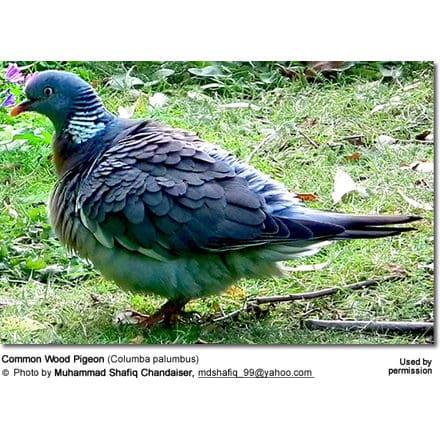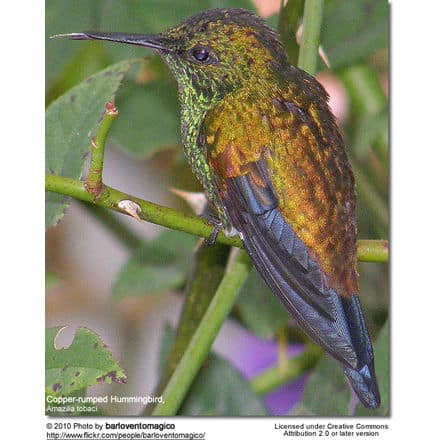Wood Pigeons aka Common Wood Pigeons
The Common Wood Pigeons are locally known by a variety of names, including Cushats, Cushie-doos, European Wood-Pigeons, Ring Doves, or Culvers. Its common name was derived from the distinctive ring around the neck.
(Columbidae – Please see also Doves)
Pigeon Information … Intelligence & Amazing Facts … Species / Breeds … Breed Photo Gallery
The Common Wood Pigeon (Columba palumbus) are locally known by a variety of names, including Cushats, Cushie-doos, European Wood-Pigeons, Ring Doves or Culvers.
Its common name was derived from the distinctive ring around the neck.
Species and Ranges
Distribution
These large pigeons are found in:
- the colder northern and eastern parts of Europe – from the British Isles, France (Loire Valley, Rhone Alps), Belgium;central Scandinavia across central Russia to west-central Siberia (west of the Ob River);islands of Azores and Madeira;northwestern Africa (Morocco, Algeria and Tunisia);east to Turkey, Transcaucasus, Iran south in the Near East and Middle East to northeastern Arabia;northern Pakistan, northwestern India (Kashmir) and western China (western Sinkiang).
Northern populations are migratory, moving to France, the Iberian Peninsula (includes Spain, Portugal, Andorra and Gibraltar), northwestern Africa, Afghanistan, northern India and Nepal for the winter. Those occurring in temperate regions – such as southern and western Europe – are often resident.
They are quite common over a good part of their wide range. Outside the breeding season, they often form large flocks.
They inhabit woodlands, scrub and hedges, as well as in urban parks, gardens and city centers. They tend to avoid hills and mountains.
Description:
They measure 15 – 17 inches (38–43 cm) in length (including the tail) and weigh 11 – 21.7 oz (300 – 615 g).
Their plumage ranges from grey, brownish grey to pinkish with some white markings.
The upper plumage is greyish; the chest is pinkish-grey gradually paler towards the abdomen.
There are white marks at the bend of the wings, which are most visible in flight as white lines down the middle of the wing. Adults have a white patch on either side of the neck.
Juveniles
Immature birds lack the white patches on the sides of the neck, which start to show up in when they are 6 months old.
Their beak is greyer those of adults.
The plumage is an overall lighter grey.
Similar Species
The Wood Pigeon are larger in size and longer-tailed than other pigeons.
They superficially resemble the Stock Pigeons and Rock Pigeons, however, the Common Wood Pigeon can readily be identified by their larger size and the white markings on the necks and wings.
Nesting / Breeding:
Breeding-age males will walk along horizontal branches with swelled neck, fluffed out chest feathers, lowered wings and fanned tails; they perform noisy display climbing flights, with the wings cracked like a whiplash, and then gliding down on stiff wings.
They often breed near roadways and rivers. Males will take nesting materials to the females to build loose platform nests with.
The average nest contains two white eggs. The parents share the incubation of the eggs which lasts about 17 days. The hatchlings (known as squabs) are fed on ‘pigeon milk’, a regurgitated milky substance. The squabs fledge when they are about 29 – 35 days old.
Diet
They mostly feed on grains, round and fleshy leaves, fruits, berries, seeds, pine nuts, acorns, peas and beans, root crops, winter buds of trees and bushes, and the occasional invertebrate (larvae, ants and small worms). They particularly like young shoots and seedlings. They can be agricultural pests and are often persecuted as such. In urban areas, they can grow quite confiding, and readily accept hand-outs by the public or are found near bird feeders.
Chicks are fed “crop milk” by their parents, which is an extremely rich, sweet fluid that is produced in the parents’ crops.
 Calls / Vocalizations
Calls / Vocalizations
The calls are described as cooing (coo-coo-coo-cu-cu). They take off with a loud clattering.
During the breeding season, they emit husky ‘hooh-hrooo‘ calls.
Other (Global) Names
Arabic: ?????, ????? ????? … Asturian: Palombu Bravu … Azerbaijani: Alabaxta, Iri me?? göy?rçini … Basque: Pagauso, Pagausoa, Tudó … Bulgarian: ?????? … Breton: Ar gudon, Kudon … Catalan: Somorgollaire alablanc, Tudó … Czech: holub høivnáè, Holub hrivnác, Holub h?ivná? … Chuvash: ?????? … Danish: Ringdue … Dutch: Houtduif … Estonian: Kaelustuvi, kaelustuvi (meigas), Kaelustuvi e. meigas, Meigas … Finnish: Sepelkyyhky … French: Palombe … German: Ringelatube, Ringeltaube … Greek: (?????) ?????, ????? … Irish: Colm, Colm Coille, Colman ciolle, Colúr … Hebrew: ???? ??? … Croatian: Golub Grivnjaš … Hungarian: Örvös galamb … Icelandic: Hringdúfa … Italian: Colomba plumbea, Colombaccio, Colombaccio comune … Japanese: moribato … Lithuanian: Keréulis, Keršinis, Keršulis … Latvian: Lauku balodis … Macedonian: ????? ????????, ?????–??????? … Mongolian: ??? ?????? … Maltese: Tudun … Norwegian: Ringdue … Polish: Go??b grzywacz, grzywacz, Siniak … Portuguese: pombo torcaz, Pombo-torcaz … Russian: Vyakhir, ????????, ??????, ?????? ???????????? … Scots: Calman fiadhaich, Calman-choille, Smudan … Slovak: Holub hrivnák, Holub hrivnatý … Slovenian: golob grivar, grivar … Serbian: Golub grivaš, golub grivnjaš, ????? ??????, ????? ??????? … Spanish: Paloma Torcaz … Swedish: Ringduva … Turkish: Tahtal?, Tahtal? Güvercin, tahtaly … Tuvinian: ????-????, ???? ????-???? … Ukrainian: ?????????
Relevant Web Resources
Species Research by Sibylle Johnson
Pigeon Forums and Rescue Organizations
Please Note: The articles or images on this page are the sole property of the authors or photographers. Please contact them directly with respect to any copyright or licensing questions. Thank you.

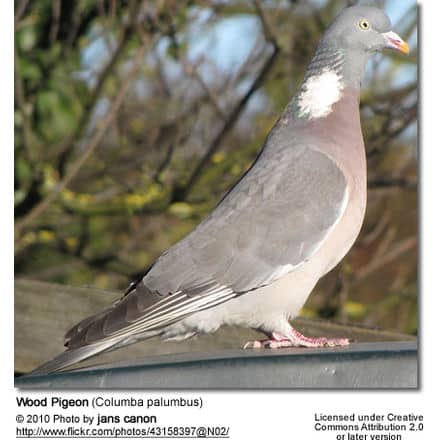
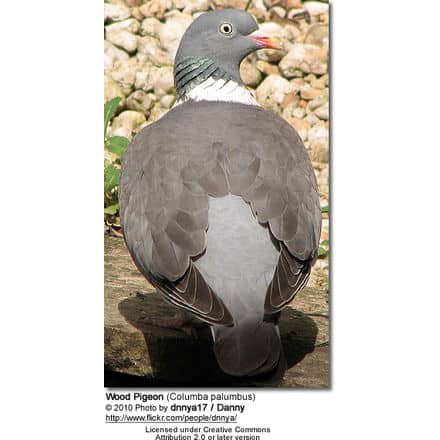




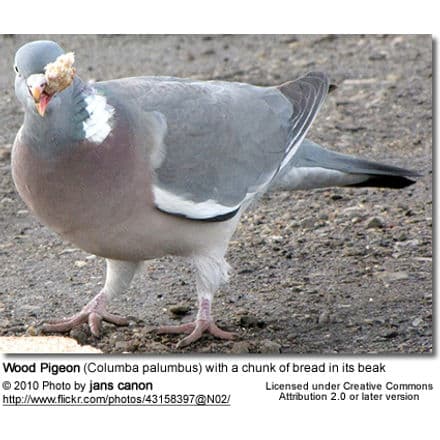
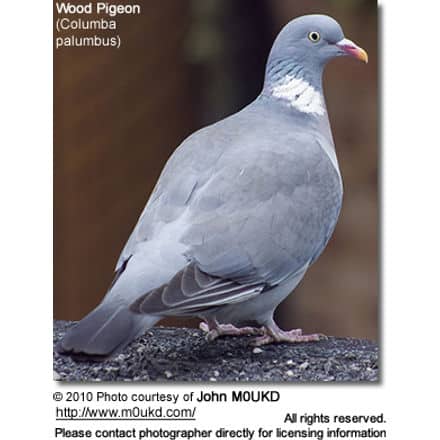 Calls / Vocalizations
Calls / Vocalizations